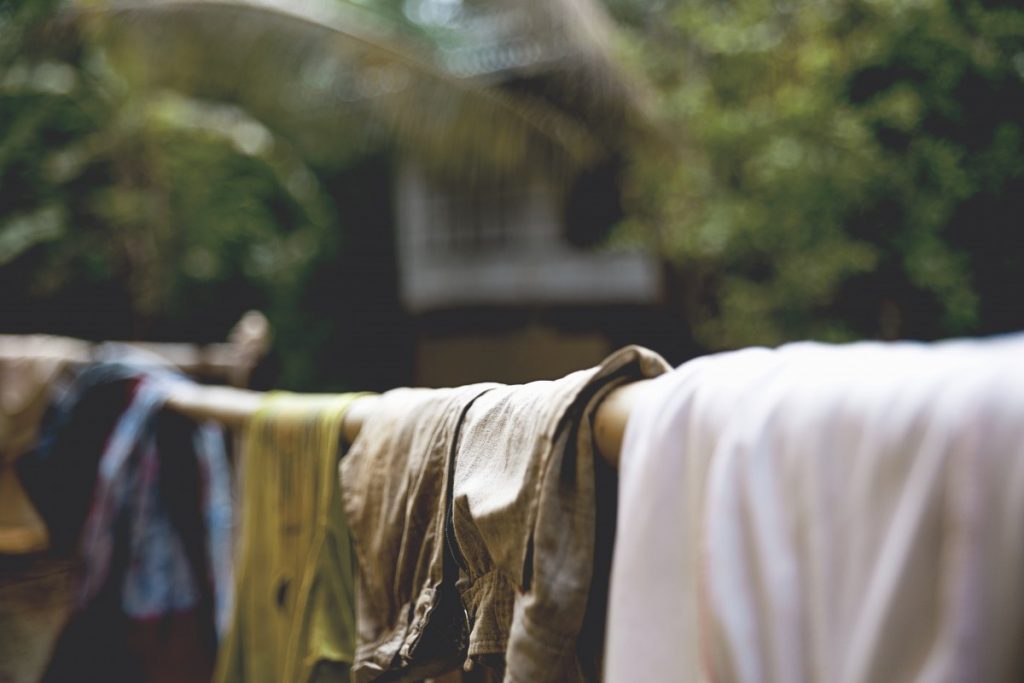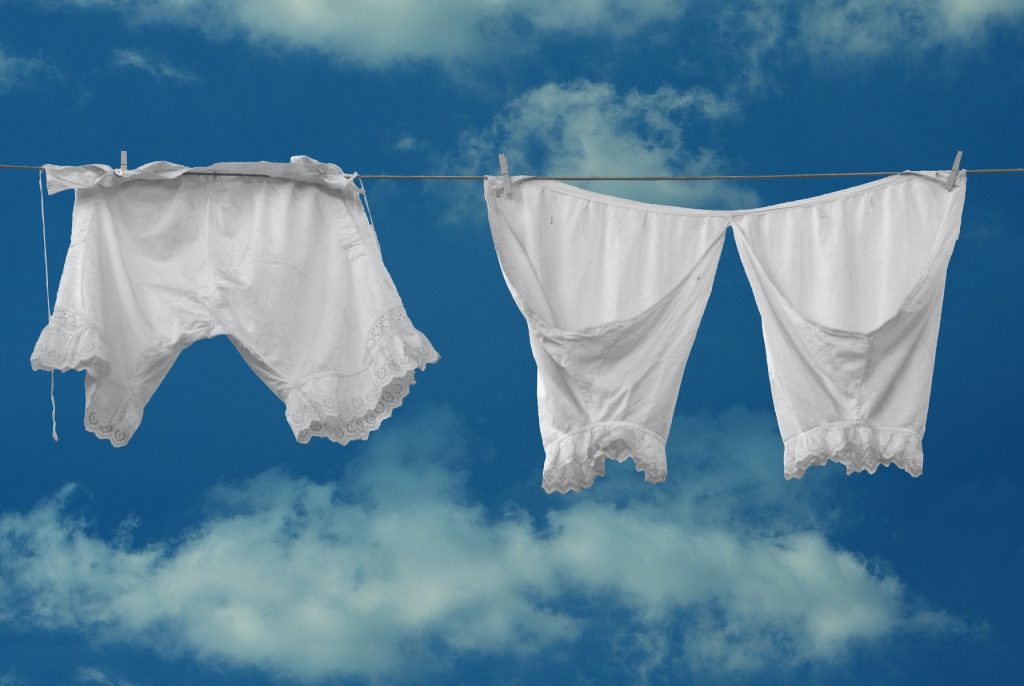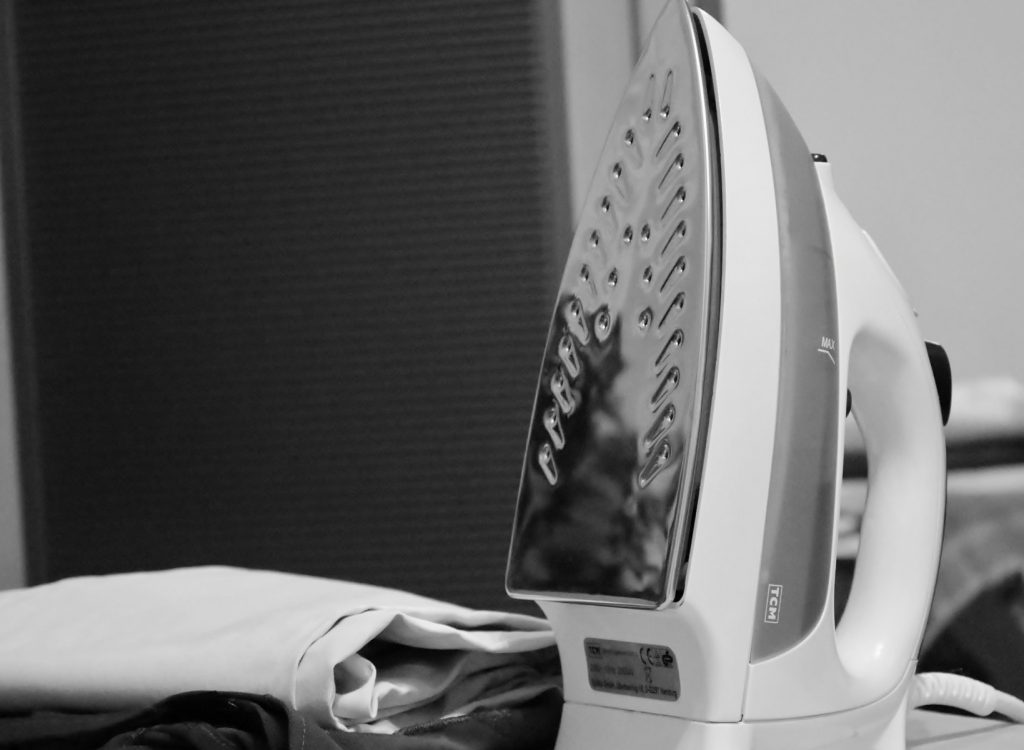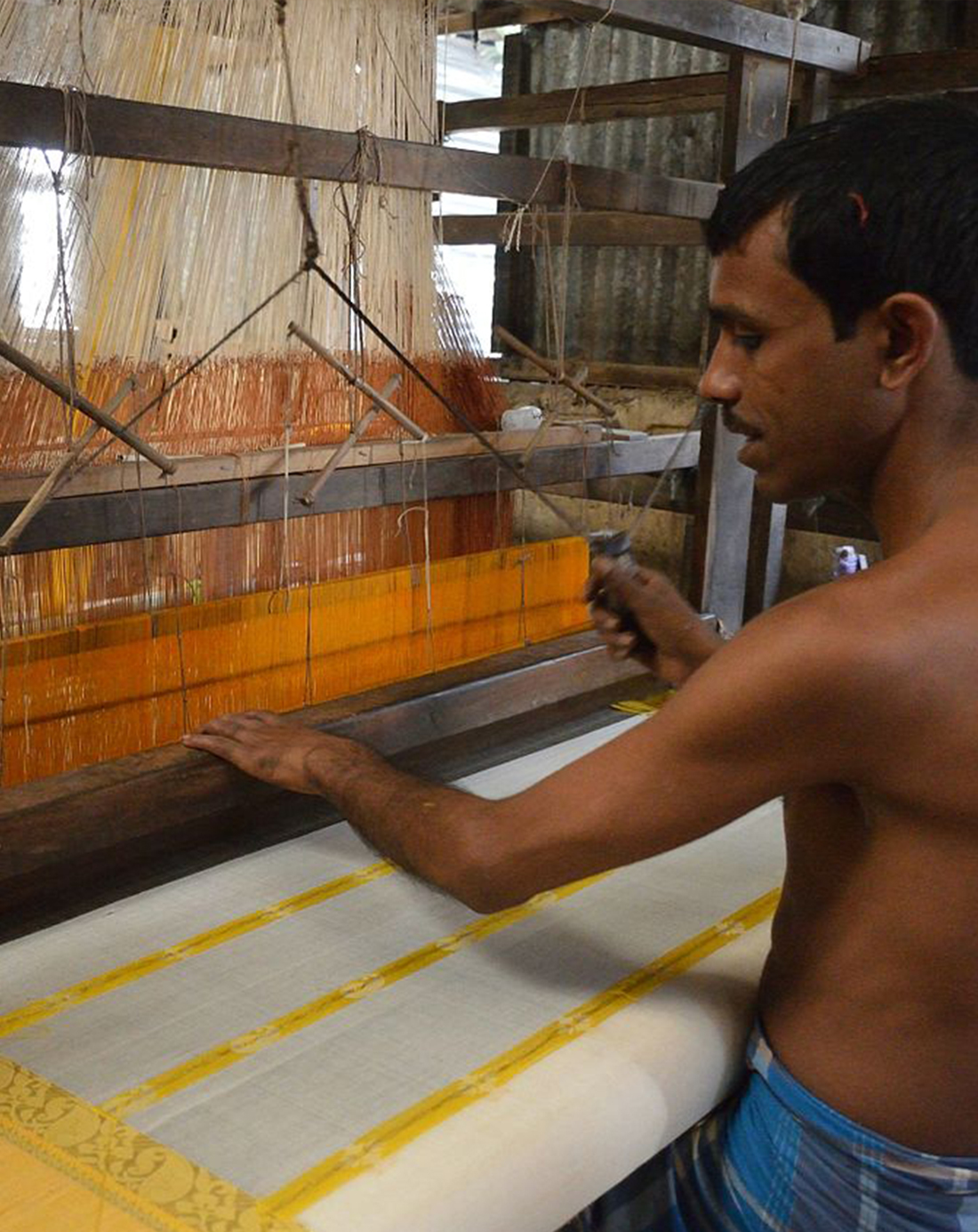Wash & Care Instructions For Handloom & Handwoven Clothes
Your handloom and handwoven garments need dry cleaning when:
- It’s made of silk or wool.
- They feature decorative trims.
- The clothes feature stiff & stabilising seam finish which water may ruin.
- You see details like crisp ruffles, pin tucks or pleats.
- Your clothes have rigid stains that cannot be treated at home.
- Garments have structured/tailored details like lining, interfacing, padding, leather, boning etc.
- The garment is really old and is prone to damage in case of washing. (And it’s worthy enough for the repeated dry cleaning cost.)
If you are free from the checklist above, you can go ahead and wash your handloom garments. Please read the wash and care instructions below:

Water is precious. Wash your garments only when it’s necessary.
Cutting down on the number of washes will greatly improve the life of your handloom and handwoven clothes.
TIP: Consider drying your handloom garment in ventilated shade or air dry it to keep your clothes fresh for use up to couple of times before washing again.
REMEMBER
SHRINKAGE: Handloom fabrics are prone to moderate shrinkage on the first wash. Expect up to 5-10% shrinkage with time depending upon how you care for the garment.
BLEEDING: Handloom and handwoven fabrics often bleed colour on the first few washes. Rub a wet cotton swab on the inside of seam or hem, and check if the fabric transfers dye into the cotton.
SORTING YOUR HANDLOOMS FOR WASH
If the garment shows tendencies to bleed, wash it separately the first few times. It is also advisable to sort your clothes colour wise and wash the same colours together. Never mix colours with whites. Turning the clothes inside out helps in retaining the colour in the long run.

WASHING
It is advisable to hand-wash your handloom garments for longevity. If hand washing your clothes is demanding, machine wash on gentle cycle is an alternative option.
Always use cold water to wash handlooms & handweaves.
Standard machine wash protocol: Close all the zippers, hooks & other fasteners before washing.
Never-ever put your handloom or handwoven clothes in a machine dryer.
HAND-WASH INSTRUCTIONS
SOAKING: Use mild detergent and cold water. Do not soak the clothes for too long. Wash the clothes immediately after soaking.
RINSING: Rub the dirty areas gently with hand. Never use a brush, scrub or a solid bar of soap directly on your handloom garments. Remove the detergent completely by rinsing a few times in cold water. Using diluted starch solution for the final rinse give a crisp finish.
DRYING
Hang to drip dry your handwoven garments in well ventilated evening settings or shade since direct sunlight causes colour fading.

IRONING
Iron your cottons when still damp. Spray water to dampen the fabric if completely dry. Woollens are relatively more crease resistant and you can use steam if necessary.
STORAGE
Store your clothes in cool and dry place with no direct sunlight. Use scented satchels to ensure your clothes don’t pick up cupboard odour. Store silks in cloth covers.






Emma John
Hello, Thank you for your awesome post. I liked your way of writing & you have highlighted the list of challenges that must be overcome. This post was really helpful to us.